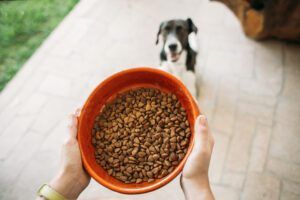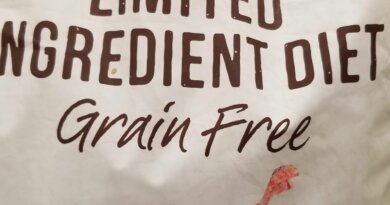Why Today’s Diets Include So Many Carbohydrates
Once the level of nutrients needed for health were agreed upon, manufacturers could use the least costly ingredients to provide those nutrients listed. Meat by-products – such as fat, organ meats, rice meal, and bone – are readily available and cheap. They can provide the bulk of the essential nutrients in the profile. When meat by-products are mixed with grain by-products such as cornmeal, corn gluten, wheat gluten, pearled barley, and rice meal, a few extra nutrients, fiber, and volume are gained at a low cost. The goal is to keep the cost down but not to dilute the needed amounts of healthy protein, fat, vitamins, and minerals too much in the recipe. Grain by-products provide a cheap source of energy and fiber and bring the cost of the food way down. That’s why the carbohydrate percentage is much higher today than it was in the ancestral diet.
So if grain is good for us, why wouldn’t grain by-products be good for our pets? After all, the proto-dog certainly developed the ability to better digest carbohydrates, and our domesticated predators that evolved to eat protein and fat have tolerated the higher amounts of carbohydrates we have served them.
However, today’s dog faces high incidences of obesity, diabetes, and cancer. Could these issues be due to more calories, higher fat content, and more carbs in today’s diets? With all the variables, it may be impossible to scientifically prove that the ingredients in today’s commercial dog food cause harm, but my experience has been that when dogs are fed moister, higher-protein, and higher-fat choices, many look and feel much better.
To learn more about feeding your dog a complete diet for a happier, healthier, and longer life, purchase The Dog Diet Answer Book from Whole Dog Journal.





